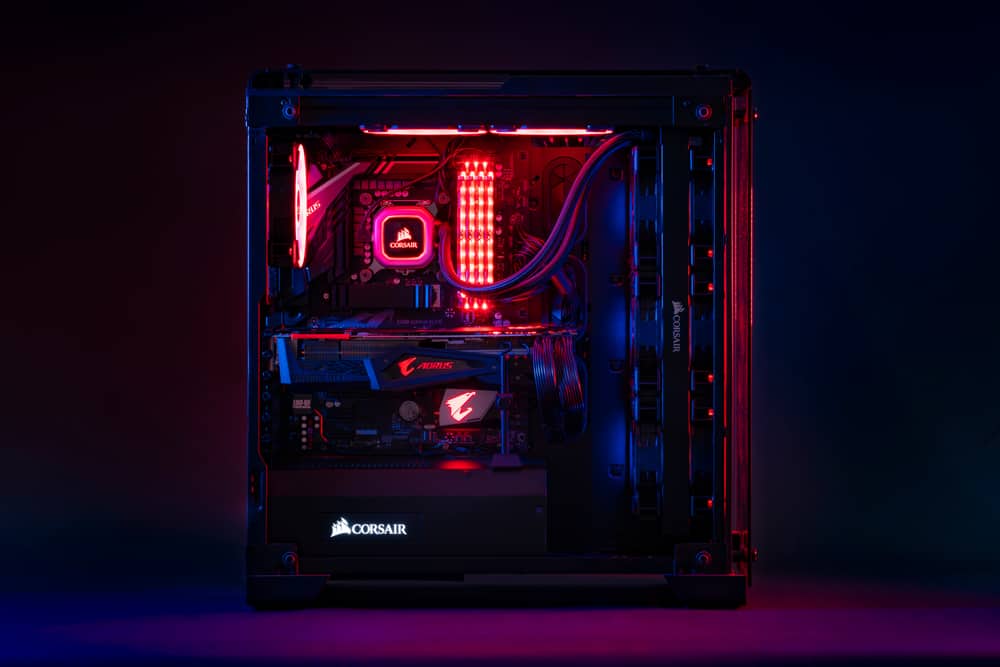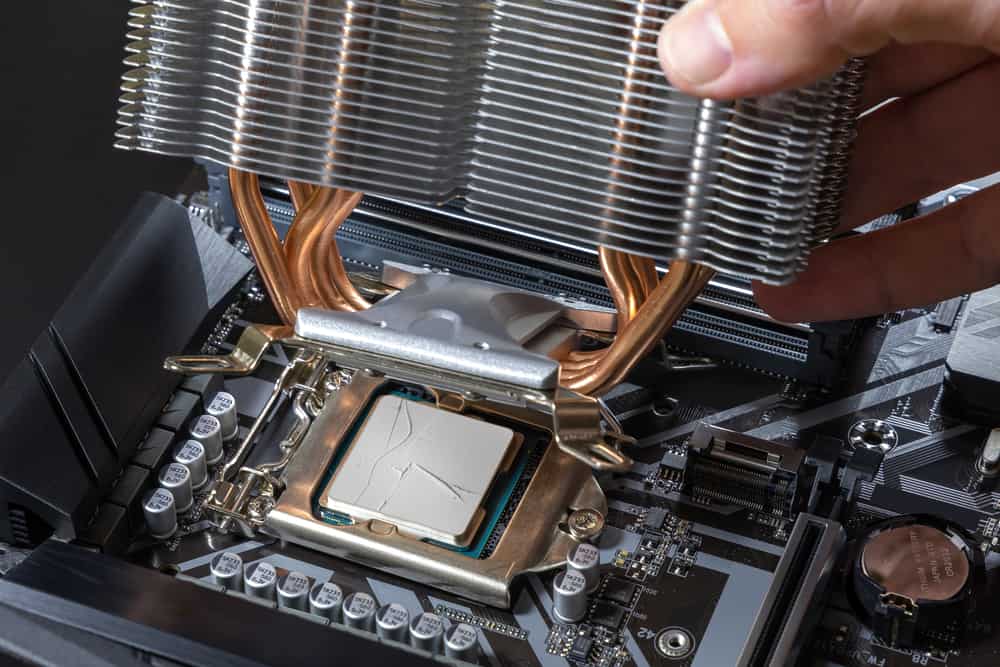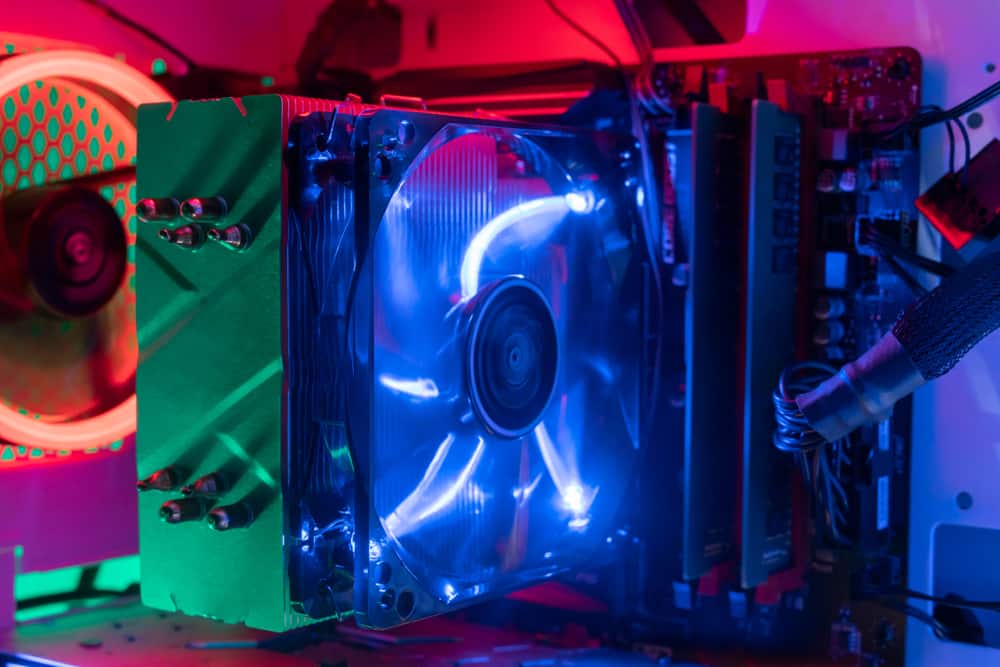
A CPU cooler is an essential part of any robust system.
If your current CPU cooler isn’t working, you’ll have to replace it immediately.
If it can’t handle the CPU temperature and cool it down like it’s supposed to, you need to upgrade it, or your components will get damaged.
You first need to find out what type of CPU cooler you currently have installed for a replacement.
You’ll get all the information you need to identify your CPU cooler easily by reading this article.
You’ll also learn how to find out which CPU cooler you can replace your current one with.
How To Find Out What CPU Cooler I Have?

Multiple software exists that can provide you with information about your PC’s components, including the motherboard, CPU, GPU, RAM, and so on.
Even Windows has a built-in utility that shows you the details about your computer components.
Unfortunately, these apps and utilities don’t tell you about the type and model of your CPU cooler.
Therefore, you will need to research to find out what CPU cooler you have installed.
1. Search Online

If you’ve bought a pre-built PC and you haven’t assembled the parts yourself, you can simply look up the PC’s model online and search for details about its components.
The manufacturer’s official website should be among the first headlines to appear on your search.
Each product should have a section dedicated to its details.
Also, you should be able to download the PC’s manual which will hopefully provide you with some useful information about the CPU cooler.
2. Look for Yourself!

If the previous method didn’t work for you, the only other way you can determine what CPU cooler you have is to get out a screwdriver.
Follow these steps to get some answers:
- Turn off your system and unplug the power cable from the wall outlet.
- Open the PC’s case by removing its side panel.
- Find the motherboard and the CPU.
- If your CPU has an air cooler with a heatsink fan, it should be sitting right on top of the CPU.
- If you have a water cooler, its main radiator should be attached to the case wall.
- Manufacturers usually print a label or their brand logo on the CPU cooler fan or the radiator.
- Once you’ve seen which CPU cooler you have, you can close up the case and reconnect the cables.
What Is the CPU Cooler’s Job?

The Central Processing Unit, CPU for short, is a square-shaped component that sits on the motherboard.
It acts as your computer system’s brain, controlling and routing instructions from one component to another.
When you execute intensive programs for a long period of time, you put a load of pressure on the CPU, which turns into heat in return.
If this heat does not get dissipated, your CPU will overheat and get damaged over time.
It will also have an adverse impact on the computer’s performance.
The CPU Cooler, also known as HSF or heatsink and fan, sits on top of the CPU on the motherboard to keep it cool.
It draws heat away from the CPU chip and blows away the accumulated heat energy.
That’s why it’s essential to have a powerful CPU cooler installed at all times.
What Are The Different Types Of CPU Coolers?

There are generally two main types of CPU Coolers: air-based coolers and liquid-based coolers.
However, each of these types has subgroups themselves.
If you want to recognize the type of your CPU cooler when you open up your PC, you have to learn about the different kinds and how to distinguish between their physical characteristics.
1. Air-Based CPU Coolers
Air coolers are cheap and easily replaceable devices, perfect for general computer users.
They all dissipate heat by using specifically designed heatsinks and fans, but different air coolers come with varying levels of noise and speed.
2. U Tower Type Air Cooler
U tower type air coolers, also known as tower type air coolers, are made of two large heatsinks that form a U shape, hence the name.
It’s like two similar towers sitting next to each other.
There are fans attached to the side of the heatsinks, aligned with the exhaust fans to boost the cooling functionality.
3. C-Type Air Cooler
C-type air coolers are much smaller than U tower-type coolers.
Only one heatsink is attached to the heat pipes, with only one fan installed to blow away the heat.
4. Low-Profile Air Cooler
These air coolers are even smaller than the C-type coolers, and they can fit in the smallest cases.
They have thinner heatsinks with small fans.
Because of their smaller size, they’re not as strong as other cooler types, but they’re cheaper.
5. Water/Liquid Coolers
Water or liquid coolers are an improvement over the air cooler types, and they’re also more expensive.
Since they use liquid to transfer heat away from the CPU, they can keep their temperature manageable even when the system is under the heaviest of loads.
That’s why high-end PC users and gamers use liquid coolers instead of air coolers.
AIO Liquid Cooler
AIO or All-in-One liquid coolers have all the components packed inside.
There’s a CPU water block with an in-built pump.
The block is connected to the radiators through pipes.
The pipes are equipped with fans to get rid of the produced heat.
They’re the easiest way to go if you want a liquid cooler.
They come with built-in mounting mechanisms that you can easily install on Intel and AMD processors.
Custom Water-Cooling Loops
Custom water-cooling loops aren’t easy to miss.
They have the same components as an AIO liquid cooler, with an additional reservoir, fittings, water block, and custom tubing.
Not only do they work better than the previously mentioned cooling systems, but they’re also aesthetically more pleasing.
Submerged Cooling
These are the peak of CPU cooling systems.
Most submerged cooling systems use a big tank filled with mineral oil, which can’t conduct electricity and submerge the PC components inside the oil.
Not only does it look cool, but it’ll also keep all your hardware cool, including the CPU, RAM, motherboard, and so on.
How To Check The Compatibility Of A New CPU Cooler With Your Setup

Knowing the type of CPU cooler previously installed in your PC is usually enough if you want to replace it with the same brand and model.
However, if you aren’t satisfied with the device or want to upgrade the cooling system, you’ll have to check the compatibility of the cooler you have your eye on.
Here are some of the specs you need to check before buying a CPU cooler:
1. Socket Type

A good majority of the CPU coolers are compatible with the most popular socket types.
However, some only have a specific socket type, so it’s best to check the compatibility.
First, you need to find out what your socket type is:
Manufacturer’s Website
If you head to your motherboard or CPU manufacturer’s official website, you’ll find the socket type of your CPU.
If you don’t know your CPU brand and model, here’s how to find out:
- Type “System Information” in the Windows dialog bar and open the utility.
- Find System model and Processor items in the list. Their respective values will show you your motherboard and CPU models.
- If your PC has an Intel CPU, head to the Intel Product Specifications page.
- Search for your CPU model and open the page with the processor’s specs.
- In the Package Specifications section, find the Sockets Supported entry. Its dedicated value will be your CPU’s socket type.
- If your PC has an AMP processor, head to AMD’s official website.
- Search for your CPU model and check out its specs sheet.
- Find the Package entry and check out its value, the CPU’s socket type.
Third-Party Software
Another way for checking the CPU socket type is by installing third-party software like CPU-Z.
It’ll show you your CPU and motherboard model, along with the socket type under the Package heading.
You won’t have to search for the information online.
Now that you know your socket type, you should check if the CPU cooler you want to buy supports it.
You can head to the CPU cooler’s manufacturer’s website or find it under the specs list on a retailer’s website.
2. Clearance

The next important factor is that the CPU cooler’s dimensions be compatible with the case and motherboard.
Case Clearance
If the CPU cooler you get turns out to be too tall to fit inside your case, you’ll have to return it.
To avoid the hassle, you need to check the cooler’s height on its specs sheet.
Check the specs sheet of your case, as well, and see if the cooler will fit inside.
Most case manufacturers state CPU cooler compatibility on their websites or manuals.
You can also use a ruler and measure the available space starting from the CPU’s top to the panel of the computer’s chassis.
If you’re buying an AIO cooler, you need enough space for mounting its radiator.
The radiators come in many different sizes, and not all cases can fit them inside.
Check the radiator’s dimensions on its manufacturer’s website and refer to the case’s specs sheet to ensure it fits.
Motherboard Clearance
The last factor to consider is motherboard clearance.
Your motherboard’s layout will determine which cooler you can fit on top.
Some high-end coolers are particularly bulky, and their fins are quite large.
They can get in the way of the DIMM slots on the motherboard or hang over the top PCIe lane, making it impossible to install the GPU in the upper lanes.
Some CPU cooler manufacturers have a list of compatible motherboards on their websites that you can refer to.
Moreover, if your RAM sticks are too tall, the bulkier coolers might interfere with them.
If that’s the case for you, you’ll have to search online in forums and find out how other people fit the cooler.
You can also get a ruler and measure the dimensions.
Frequently Asked Questions

1. Does The Type Of CPU Cooler Matter?
Yes, the type of CPU Cooler you choose for your PC build is critical, especially if you’re planning to overclock your computer.
A low-end CPU cooler will be your most significant limiting factor when it comes to doing intensive tasks like gaming, video and photo editing, programming, and so on.
2. Is A Stock CPU Cooler Enough For Gaming?
A stock CPU cooler can be enough for gaming if it’s high in quality.
It also depends on the games you want to play, but as long as the load isn’t very heavy and you’re not overclocking, a reputable stock CPU cooler can suffice.
Be aware that it might get a bit loud from time to time.
3. Do I Need Liquid Cooling If I Don’t Overclock?
You don’t need liquid cooling systems if you’re not planning on overclocking your CPU.
You can benefit from their aesthetics if you want, but air coolers will work just fine to keep the temperature down.
If your CPU is constantly running at high temperatures like 75°C–80°C, installing a liquid cooler will be a good choice.
NEXT: How To Find Out What Power Supply You Have (3 Ways)

























